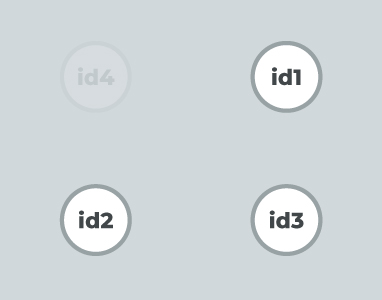0.0.7 • Published 8 years ago
gd_graph v0.0.7
GD Graph
gd_graph is a simple tool for managing a directed graph and includes some nice features that help to manage the data:
- The data store is immutable and functional so side effects aren't a problem.
- The interface is entirely functional and has some useful introspection tools like 'has()', 'connected()', 'degree()'
- Generates and manages unique ids for all nodes across multiple graphs. Create as many graphs as you'd like and it won't create possible node id conflicts.
- No dependencies. This is intended to be simple and generic with minimal assumption about how it will be used. Possible uses are: scene graphs, games, logic models, data visualization, etc. gd_graph is intended to simplify some of the underlying logic associated with that type of data architecture.
- Small and lightweight.
Install
npm install --save gd_graphTests
npm testImporting
import graph from "gd_graph" // ES6
// or
var graph = require("../gd_graph.es5").default; // ES5Create a graph.
const g = graph()Add nodes to the graph.

// add nodes to the graph
// they start out disconnected
// returns id's for the nodes
const id1 = g.add()
const id2 = g.add()
const id3 = g.add()
const id4 = g.add()Remove a node from the graph.

// removes the node and all of its connections
// cleans up connections from other nodes as well
g.remove( id4 );Add directional edges between graph nodes.

// connect directional edge between nodes
// returns true/false for connection success
g.connect( id1, id2 ) //true
g.connect( id1, id3 ) //true
g.connect( id1, id4 ) //falseAdd bidirectional edges between graph nodes. This will only connect unconnected edges.

// bidirectionally connect nodes
g.connectFull(id2, id3) //[true, true]
g.connectFull(id1, id2) //[false, true]
g.connectFull(id1, id4) //[false, false]Other methods and tools for introspection
// get a list of all node ids
// unique ids are generated by the graph
g.ids() // ["n0", "n1", "n2"]
// get all the nodes and their edges
g.nodes() // {n0:[], n1:[], n2:[]}
// does a directional edge
// connect the first node to the second
g.connected( id1, id2 ) // true
g.connected( id1, id3 ) // false
g.connected( id3, id1 ) // false
// does the graph contain a node with this id?
g.has( id1 ) // true
g.has( id4 ) // false
// get the node's list of edges
g.get( id1 ) // [ ids... ]
g.get( id1 ) // [ ids... ]
// how many connections has id1 formed with other nodes
// convenience to get the length of the edge list for
// this node
g.degree( id1 ) // 3
// removes the edge from id1 -> id2
// returns true if the connection is severed
// returns false if the sever fails
g.sever( id1, id2 ) // true
// removes the edge from id2 -> id3 and id3 -> id2
// returns [true,true] if the connections are severed
// returns [false, false] if the severs fail
g.severFull(id2, id3)